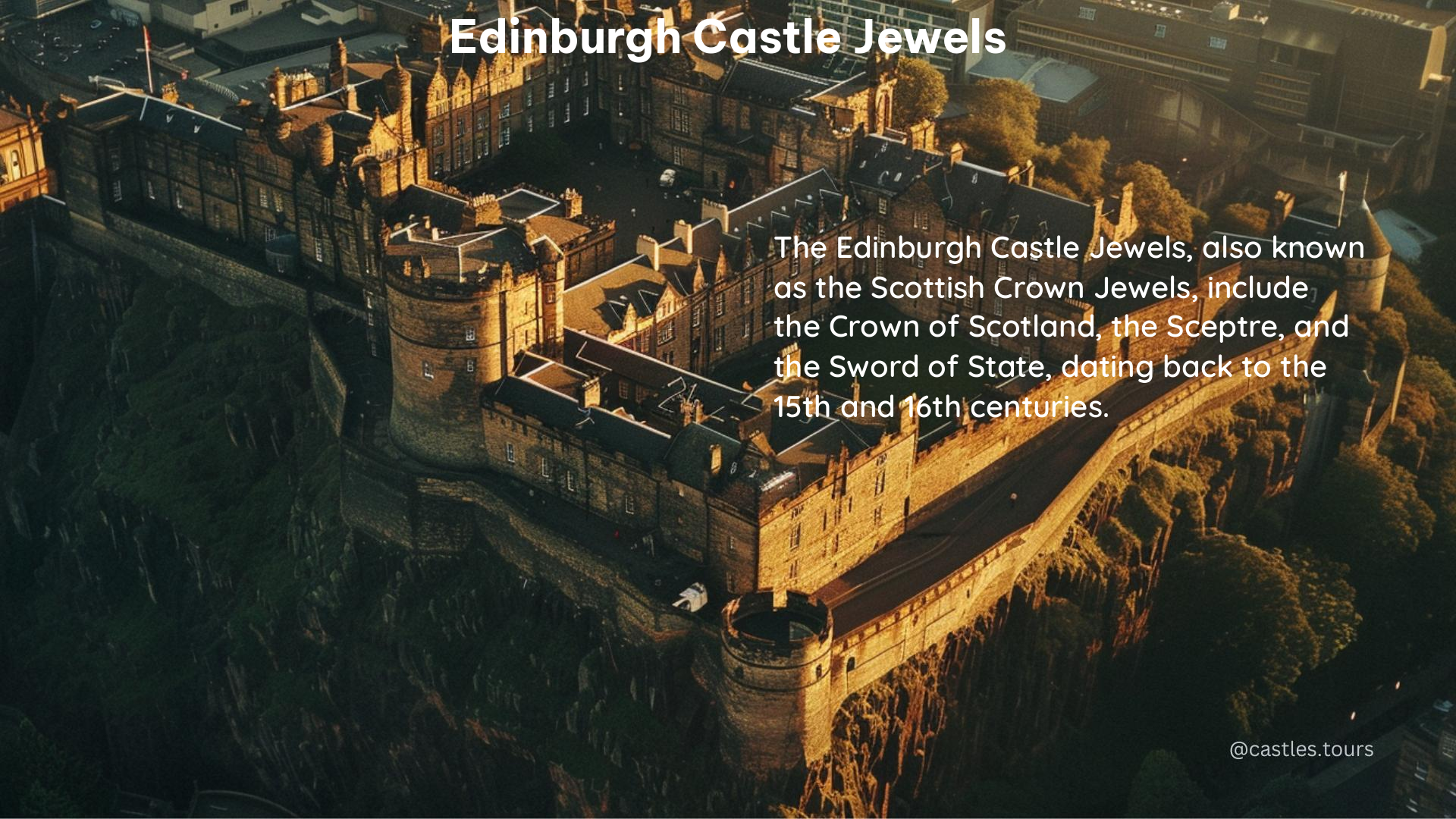The Edinburgh Castle Jewels, also known as the Honours of Scotland, are a set of crown jewels that have been used in the coronation of Scottish monarchs since the 15th century. These historic treasures are a testament to Scotland’s rich heritage and have captivated visitors from around the world.
Composition and History
The Edinburgh Castle Jewels are composed of gold, silver, and precious gems, and they date back to the 15th and 16th centuries, making them the oldest surviving set of crown jewels in the British Isles. These jewels were first used together at the coronation of Mary, Queen of Scots, in 1543.
Conservation and Display

In recent years, the Edinburgh Castle Jewels have undergone significant conservation efforts, including cleaning and scientific analyses to learn more about their construction and repairs. These efforts have helped to preserve the jewels for future generations. The jewels are currently on display at Edinburgh Castle in the Crown Room, where visitors can admire their intricate craftsmanship and learn about their fascinating history.
Historical Significance
The Edinburgh Castle Jewels have a rich and storied history. During the English Civil War, the jewels were hidden between 1651 and 1660 to prevent them from being melted down and sold by Oliver Cromwell’s army. The jewels were later rediscovered in 1818 after being locked away for over a century following the Treaty of Union in 1707.
Components
The Edinburgh Castle Jewels consist of several key components, each with its own unique history and significance:
Crown of Scotland
The Crown of Scotland was made in Scotland and dates from 1540. It is a symbol of the country’s sovereignty and has been used in the coronation of Scottish monarchs for centuries.
Sceptre
The Sceptre was made in Italy as a gift from the Pope to James IV. It features three figures supporting a crystal globe with a Scottish pearl on top, and it is a symbol of the monarch’s spiritual and temporal power.
Sword of State
The Sword of State was also made in Italy and was presented to James IV in 1507 by Pope Julius II. It has a blade that is a metre long and is a symbol of the monarch’s authority.
Other Related Items
In addition to the crown jewels, the Edinburgh Castle display includes several other items of historical significance:
Stone of Destiny
The Stone of Destiny is a symbol of Scotland’s nationhood and was returned to Scotland after 700 years in England. It is displayed alongside the Crown Jewels.
Stewart Jewels
The Stewart Jewels were added to the display in 1830 and include a locket, a Great George and collar, and a ruby ring that were passed down in the Stuart family.
Visitor Information
The Edinburgh Castle Jewels are on display at Edinburgh Castle, which is open daily from 9:30 AM to 6:00 PM (April to September) and from 9:30 AM to 5:00 PM (October to March). Ticket prices vary depending on the time of year and visitor type, so be sure to check the official website for details.
References
- https://the-past.com/shorts/the-picture-desk/conserving-the-scottish-crown-jewels-edinburgh-castle/
- https://www.visitscotland.com/things-to-do/attractions/historic/stone-of-destiny
- https://www.edinburghcastle.scot/the-castle/history
- https://www.historic-uk.com/HistoryUK/HistoryofScotland/The-Honours-of-Scotland/
- https://en.wikipedia.org/wiki/Honours_of_Scotland
